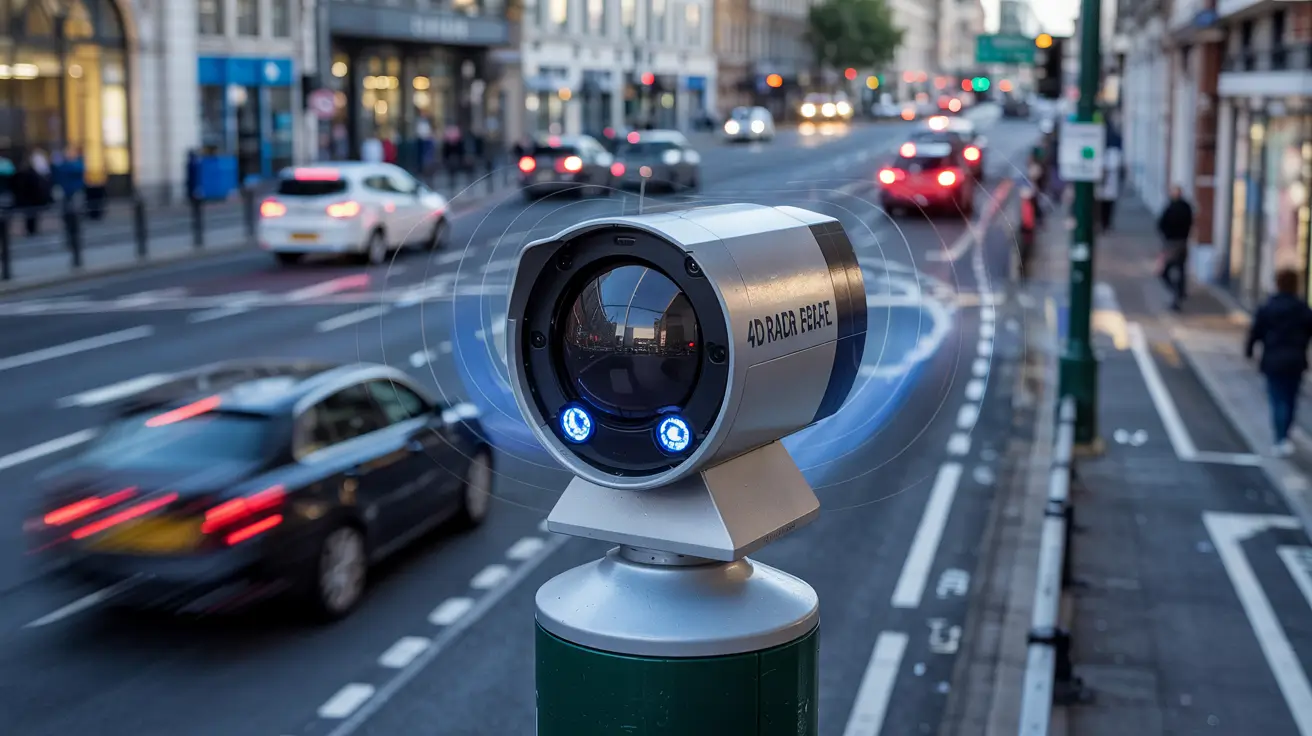Cheshire residents face soaring housing costs and vanishing services after government overhaul. Is your family's welfare at risk? Local communities struggle as policy changes reshape the county's future.
The UK's new 4D radar speed cameras on South London's A23 combine artificial intelligence with high-resolution imaging to revolutionise traffic enforcement. You'll find these yellow-painted devices can detect vehicles in all weather conditions, from rain to snow, while measuring speeds and classifying vehicle types with improved accuracy. The cameras integrate with police databases for thorough checks and reduce false positives compared to traditional systems. These innovations mark the beginning of significant advancements in road safety infrastructure.
The deployment of 4D radar speed cameras marks a significant advancement in traffic enforcement technology, combining artificial intelligence with high-resolution imaging capabilities. You'll find these state-of-the-art devices operating effectively in various weather conditions, from rain and snow to dense fog, ensuring consistent monitoring of traffic violations throughout the year.
On South London's A23, you'll notice these yellow-painted cameras that are revolutionising how authorities monitor and enforce traffic laws. The system's ability to classify different types of vehicles, measure speeds with unprecedented accuracy, and detect objects' elevation above the road surface makes it a powerful tool in your community's safety arsenal. These cameras utilise advanced echolocation and time-of-flight measurements to create detailed 3D maps of the environment.
Advanced yellow cameras on the A23 are transforming traffic enforcement with precise vehicle classification and elevation detection capabilities.
You'll appreciate how these cameras differ from traditional enforcement methods, as they overcome common limitations of older technologies. While conventional cameras struggle in poor lighting and Lidar systems falter in adverse weather, 4D radar maintains its effectiveness across all conditions.
The technology's integration with existing police databases allows for additional checks, such as verifying insurance status, expanding its utility beyond simple speed enforcement.
When you encounter these devices, you should know they're doing more than just monitoring speed. The cameras' AI-augmented capabilities facilitate real-time pattern recognition and prediction, helping authorities prevent accidents before they occur.
The system's thorough data analysis provides immediate feedback for law enforcement, allowing for timely interventions when necessary. You'll benefit from the cameras' improved accuracy in reducing false positives, ensuring that only actual violations are flagged for enforcement.
The technology's precise measurements and object classification capabilities help authorities identify overcapacity vehicles and non-compliant behaviour more effectively than ever before.
The implementation of these cameras represents a significant step forward in your community's road safety infrastructure. As authorities continue to refine the system through pilot testing and personnel training, you can expect to see improvements in traffic enforcement effectiveness and accident reduction.
While some may raise privacy concerns, the cameras' visible presence and transparent operation help maintain public trust while serving their primary purpose of promoting road safety.
The future of traffic enforcement is evolving with this technology, as it seamlessly integrates with existing infrastructure and adapts to changing needs. You'll continue to see developments in this field as authorities work to maximise the system's potential, ensuring safer roads for everyone while maintaining efficient and fair enforcement practices.
Most-Asked Questions FAQ
How Much Do 4D Radar Speed Cameras Cost to Install and Maintain?
You'll find that exact costs aren't publicly available, but you can expect significant expenses for installation and maintenance because of advanced AI technology, regular software updates, and ongoing hardware maintenance requirements.
Can Weather Conditions Affect the Accuracy of 4D Radar Speed Cameras?
You'll find that 4D radar speed cameras maintain their accuracy in all weather conditions. They'll work effectively through rain, snow, and fog, unlike traditional optical systems that can be compromised by poor visibility.
What Happens if Multiple Vehicles Trigger the Camera Simultaneously?
Don't worry! When multiple vehicles trigger the camera at once, it'll track each one independently using 4D radar and high-res imaging. You'll get accurate data for every vehicle across six lanes simultaneously.
Are 4D Radar Speed Cameras Vulnerable to Hacking or Tampering?
Yes, 4D radar speed cameras can be vulnerable to hacking and tampering, especially if they lack proper security measures. You'll find they're susceptible to data breaches, unauthorised access, and potential radar spoofing attacks.
How Long Does It Take for Authorities to Process Violations From 4D Cameras?
You'll typically receive a Notice of Intended Prosecution within 14 days after being caught speeding. The AI-enhanced processing of 4D camera data means authorities can handle violations much more efficiently than before.
